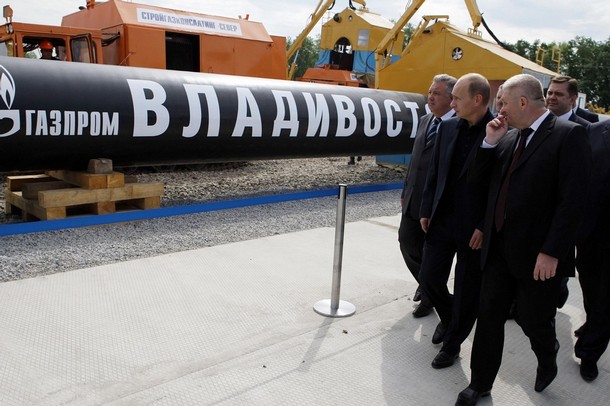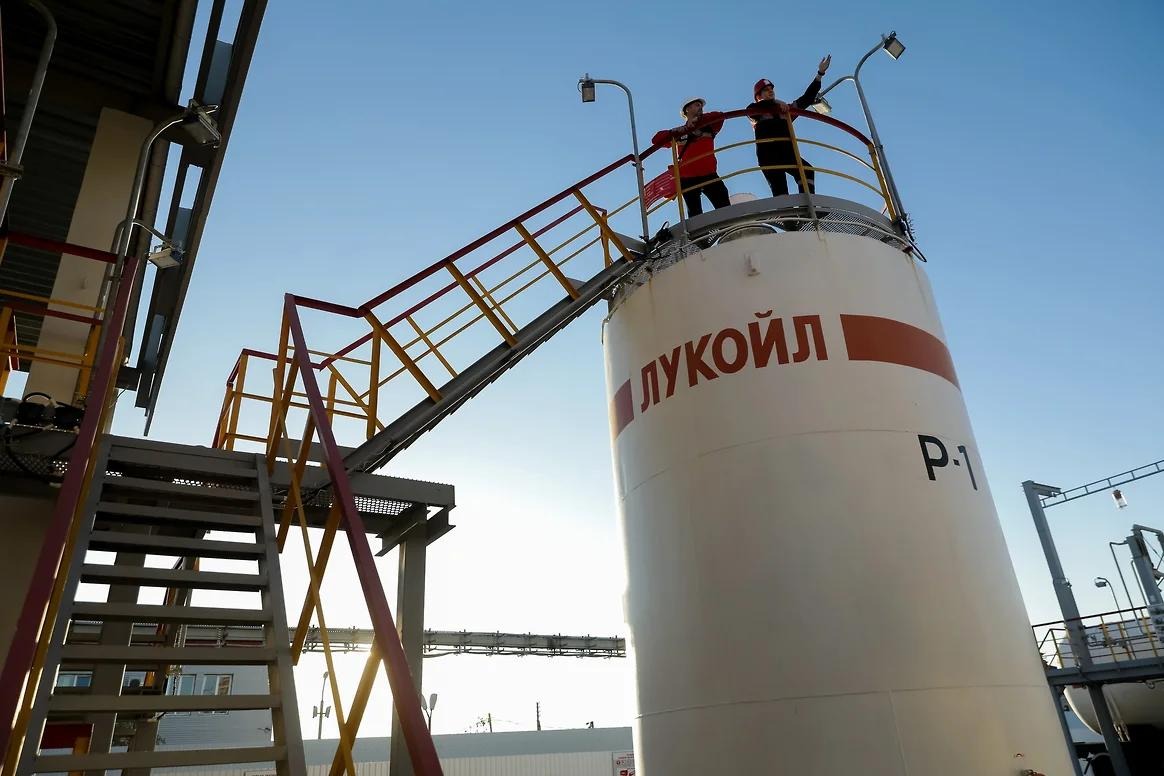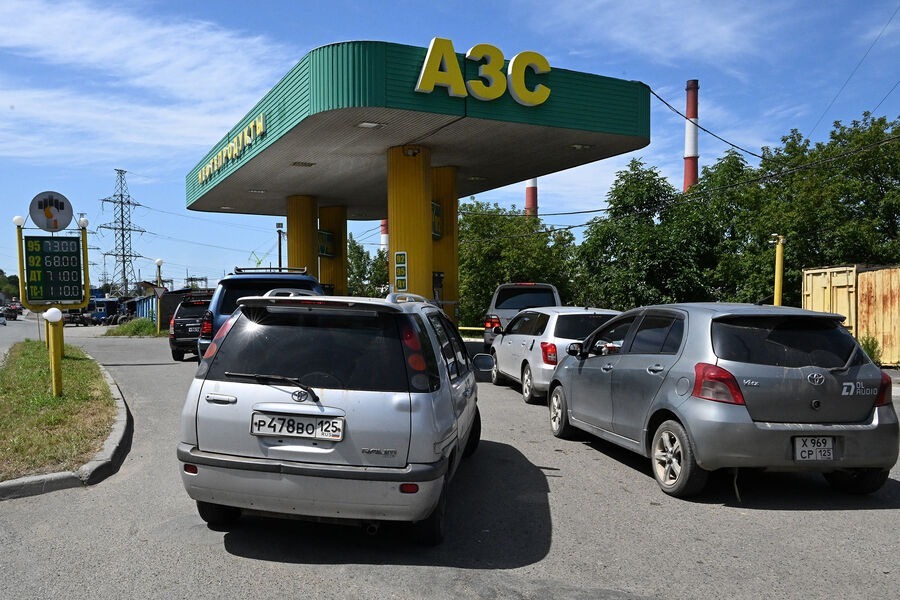
Sakhalin-Khabarovsk-Vladivostok Pipeline Launched
Sakhalin-Khabarovsk-Vladivostok Pipeline Launched
On July 31 the Russian Prime Minister, Vladimir Putin, formally launched the construction of the 1,800 kilometer Sakhalin-Khabarovsk-Vladivostok natural gas pipe-line (ITAR-TASS, July 31). This new strategic pipeline is designed to supply natural gas to the population of the Russian Far East, so far deprived of their country’s main resource, and ensure exports to the Asian Pacific Region (APR) from a new Liquefied Natural Gas (LNG) plant to be built in Vladivostok (www.gazprom.ru, July 31).
Gazprom will spend $11 billion to have the line commissioned and fully operational to pump 6 billion cubic meters (bcm) of gas annually by 2011. Eventually, its capacity is intended to grow to 30 bcm per year, the only problem being that Gazprom will not have sufficient gas to pump through this pipeline (www.lenta.ru, August 1). Indeed, Gazprom’s fortunes do not appear positive: on August 1, the day after he had launched the Sakhalin-Vladivostok pipeline, Putin admitted that the production of natural gas in Russia had dropped by 19.3 percent in 2009 (www.rosbalt.ru, June 9).
Independent experts have long insisted that Gazprom was running out of gas and would be unable to deliver on its numerous commitments. Even Anatoly Chubais, the architect of the Russian market reforms in the 1990’s who cautiously followed Putin’s line in the 2000’s, noted in April 2007: "Gazprom is doing very well in oil, and in the mass media. However, Gazprom is not doing so well just on one minor issue -natural gas, that is" (www.annews.ru, April 13, 2007). Gazprom, in fact, intends to tap into the new Sakhalin III project’s gas fields to fill the new pipeline, but those fields will start producing only in 2014, if at all -geological surveys and prospecting has just commenced (www.gazprom.ru, July 31). There is no telling, if the fields will ever be commissioned.
The solution to Gazprom’s problem now indeed lies in well-tested Soviet tactics, successfully practiced by Stalin’s disciple Putin. Russia simply targeted natural gas, produced by the Sakhalin I project, operated by ExxonMobil (www.lenta.ru, August 1). In 2006, Putin, unhappy with the Production Sharing Agreements (PSA) that Russia had signed with Western companies in the 1990’s, leaned heavily on the projects that involved PSA’s very much in Stalin’s style. The case study was the Sakhalin 2 project, operated by Royal Dutch Shell (55 percent stake), Japan’s Mitsui (25 percent), and Mitsubishi (20 percent). Russia simply took over Sakhalin Energy (SE), the operator of the Shell-led Sakhalin II consortium. At $20 billion, it was the world’s largest integrated oil-and-gas-export project, with total reserves of some 4 billion barrels of oil equivalent (BOE) and a total project capacity of 395,000 BOE per day, including 9.6 million tons per year of liqufied-natural-gas production. It was also the largest single foreign investment in Russia. When Sakhalin II’s operators initially refused to accommodate Gazprom, the government shut them down for gross violations of Russian environmental laws. Putin personally brokered the deal between Gazprom and SE on his terms and finalized it in December 2006. SE had to sell its controlling share to Gazprom for a bargain $7.45 billion (Time, May 17, 2007).
In May 2007, Alexander Medvedev, Gazprom’s Deputy CEO and the head of GazpromExport admitted to Time that Gazprom was also targeting the $12.8 billion Sakhalin I project, operated by an Exxon-led consortium. It fitted perfectly with Russia’s strategy to gain more control over its energy assets. Now, Gazprom is poised to take over Sakhalin I, much in the same fashion it took Sakhalin II in 2006, or as Stalin took foreign concessions in the 1920’s.
Alexander Ananenkov, another Gazprom Deputy CEO, recently publicly told Putin at the formal ceremony launching the Sakhalin-Khabarovsk-Vladivostok project, that Gazprom "will have to work closely with ExxonMobil to obtain eight to ten bcm of gas from Sakhalin I," (necessary to fill the pipeline). Ananenkov also said in Khabarovsk that he expected to have talks with ExxonMobil completed by the year’s end. ExxonMobil hoped to sell its gas to China rather than to Russia on Putin’s terms. "Both the seller and the buyer must understand that supplies will come to the Russian market," Ananenkov stated flatly. "We are tightening controls over operators of PSA’s," added Energy Minister Sergei Shmatko, also attending the ceremony in Khabarovsk. "We will reach a deal on making additional gas volumes available to Russia. I think our talks will be constructive" (www.lenta.ru, August 1).
ExxonMobil might not have any other option than to accept Putin’s terms. It is yet another invaluable lesson for foreign investors seeking to maximize their profits in Russia.


